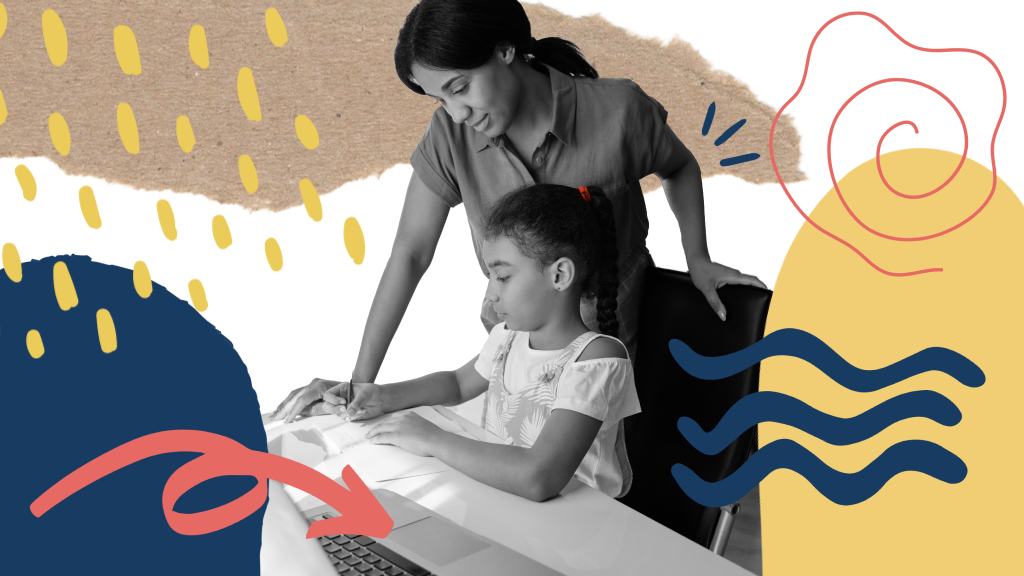Online Safety for Parents: How to Safeguard Your Child in the Digital World
13 Dec 2022

Parenting has never been an easy task. However, today’s digital world is making things significantly more challenging.
According to a Common Media Sense survey, a growing number of kids and teenagers in America are spending more time than ever on the internet. Screen time use increased by 17% between 2019 and 2021, with a disproportionate amount spent on social media. Add in the mandated online school that was brought about by the pandemic, and it’s now nearly impossible to keep kids off the internet.
Of course, the internet has many benefits. It gives kids access to information and allows them to communicate with teachers and peers, explore their creativity, and play interactive games.
But there are risks associated with online access, such as inappropriate content, cyberbullying, and online predators. For example, close to 60% of U.S. teens have been cyberbullied or threatened online, and one in seven children is contacted online by someone with sexual intentions.

As a parent or guardian, you need to ensure that your child is protected against these dangers. This is exactly what this piece will cover — the different ways you can safeguard your child’s online safety.
Learn About Online Risks
Knowing the dangers that the digital world poses will enable you to better protect your child. Some of the top online dangers that can affect your child include:
Content Risk
As mentioned earlier, the internet makes a great resource for kids to access information, but it’s also teeming with inappropriate and harmful content.
A simple Google search could bring up pirated content and content that’s violent, racist, extremist, graphic, sexually explicit, and age-inappropriate. Search engine adverts can also expose children to harmful content. Take junk food ads, for example. These have been shown to influence children’s food choices, and they can contribute to the high consumption of unhealthy foods and obesity
Even platforms designed specifically for kids can disguise inappropriate content as harmless entertainment. For instance, YouTube Kids is mostly safe, but there’s a chance that children will be exposed to violence, nudity, and other undesirable content. According to some study findings, nearly 30% of the videos watched by kids who are eight or under on the platform are intended for older target audiences.
Contact Risk
Some 4.62 billion people use social media.
While most social media platforms screen content aimed at kids to ensure its safety, it’s nearly impossible to regulate all of the activity on the platforms.
Unfortunately, this exposes children to cyberbullies, phishing scammers, and predators who can trick or threaten them into disclosing personal information, leading to exploitation, stalking, harassment, and even sexual abuse.
Technology Risk
The internet is fraught with privacy and advanced technology risks. Children, for example, can be victims of phishing attacks and they can unintentionally download malware.
Minimize Risks, Starting at Home
Online security should begin at home. Depending on your child’s age, some of the safeguards you can implement at home include:
Using Parental Controls
Figuring out what kinds of parental controls will work for you can be a bit confusing. That said, here are the three common types you need to be aware of:
- Application controls: You set these on the platform or application your child is using, for example, Google and YouTube.
- Device-level controls: These controls are configured on devices such as smartphones and laptops, and they apply regardless of where the device is connected to the internet.
- Network-level parental controls: These enable you to set up controls on your home network, i.e., on your hub or router. The controls will apply to all the devices connected to the router or hub, essentially covering your entire household. If your router doesn’t include parental controls, you can use OpenDNS to configure controls on it.
You should also consider adjusting privacy settings for things such as online games, apps, social medial sites, and electronic devices. Nonetheless, it’s essential to have a balance. Excessive controls can end up leading to kids (especially the older ones) setting up fake accounts that you can’t access.
Installing Antivirus Software
You can improve your child’s online safety by purchasing and installing anti-virus software on your family’s computers and mobile devices. If you are running on a tight budget, you could consider using a free anti-virus program such as Avast.
Antivirus software will help you detect and remove viruses and other types of harmful software that can damage your devices and give malicious programs and hackers access to your data.
Using Kid-Friendly Search Engines
Although popular search engines such as Google, Bing, and Yahoo have in-built safe search features, these do not always prove to be effective. It’s better to opt for kid-friendly search engines that are built with children in mind. Although there is still the possibility of inappropriate results getting through, kid-friendly search engines are designed to only return kid-friendly results.

Teach Your Child Appropriate Online Behavior
Parental controls work, but your child won’t always use devices where your controls have been enabled. You’ll also need to teach them how to make wise decisions online — even when they’re not with you.
Some basic guidelines to teach your child include:
- Avoiding posting personal photos online. Inform your child that once a photo is posted online, they no longer have control over it. The photo may be shared by friends who do not have privacy settings, which can lead to it being stolen or manipulated by strangers and predators.
- Never revealing personal information, such as address, phone number, or school name and location.
- Not sharing passwords with anyone (other than parents).
- Saying no to any inappropriate requests from people.
- Never agreeing to meet someone met online without parental permission and/or supervision.
- Never responding to threatening or hurtful emails, messages, or posts, and always telling a parent or another trusted adult about such messages.
- Using a screen name as opposed to a real name
- Using passwords on all mobile devices and online accounts. It’s vital to teach your child why creating strong passwords is important, how to create them, and how never to share them.
Check For Potential Signs of Online Abuse
One of the best ways to protect your child from online risks is to be able to detect when your child may be a victim of online predators.
The following are some of the warning signs that may point to your child being unsafe online:
- Nervousness when receiving a text, instant message, or email
- Reluctance to share information about online activity and secretiveness with devices
- Unexplained anger, agitation, or depression, particularly after going online
- Abruptly shutting off or walking away from the computer mid-use
- Uneasiness about going to school or outside
- Withdrawal from friends and family in real life
- Making passing statements about suicide or attempting suicide

Always Talk to Your Child
Even if you have the best controls in place, if you can’t communicate effectively with your child about online safety, your efforts will be futile. Having an open line of communication with them means they will be more likely to turn to you when they encounter problems online.
For one, you should actively encourage your child to come to you if they encounter a problem rather than hiding it. Keep in mind that even if your child is doing everything correctly, they may unintentionally visit a dangerous website. As such, it’s critical to let them know that if something goes wrong — even if they believe they’ve done everything correctly— they can still tell you.
You should also discuss with your child how (and why) you will/may need to monitor their online activity. This discussion will foster trust and make it easier for your child to confide in you.
If you have an older child, especially a teenager, talk about sexting and photo sharing. For example, sharing photos of anyone under 18, regardless of intent, is considered child pornography.
While many minors are unaware of how sending explicit selfies of themselves to others may constitute child pornography, the act of doing so usually leads to illegal activity, which can result in severe penalties.

In addition, teen sexting laws make it illegal to send or receive explicit images. You should ensure that your child knows the legal implications and understands that once pictures have left their hands, they are out there forever, and can affect their future, reputation, and relationships.
In all this, you don’t want to scare your child or prevent them from enjoying the internet’s many educational, entertainment, and social benefits; rather, you want to equip them with the skills and knowledge they need to make the most of it while avoiding the dangers.
Do As You Say
Finally, you should set a good example by modeling the kind of positive online behavior you want your child to exhibit. If your child observes you being cautious and respectful while online (for example, by limiting your screen time), they are more likely to emulate you.
Getting Online Safety for Parents Right
The internet is double-edged — it can help kids, but it also comes with some risks that you, as a parent, need to safeguard your child against. The tips outlined in this post should give you a good starting point for protecting your child.
You can also deepen your knowledge by using a platform like Lessonbee. The platform provides resources that empower parents to connect with their children while supporting their health and well-being. Check out Lessonbee’s Cyberbullying and Identity Protection course to learn more about safeguarding your child’s online safety.






